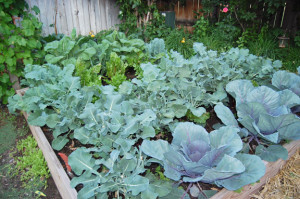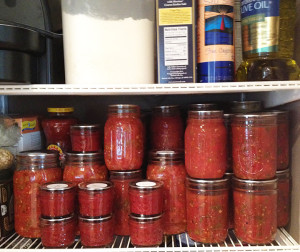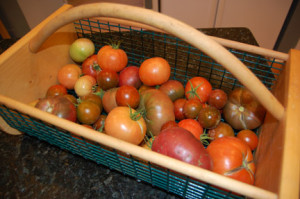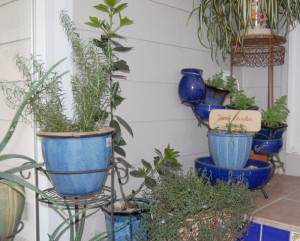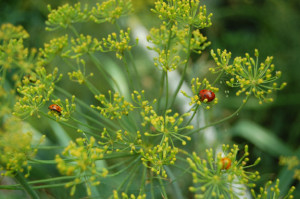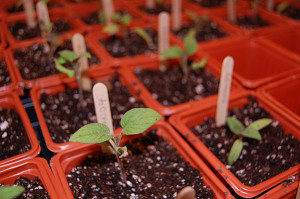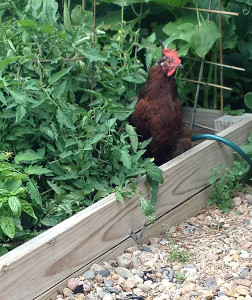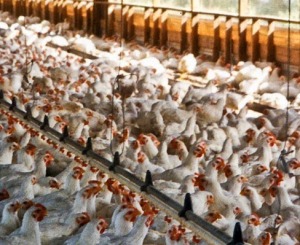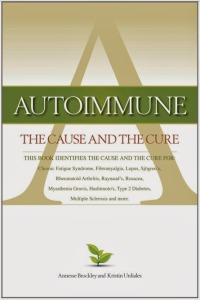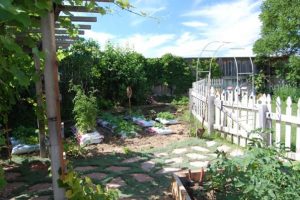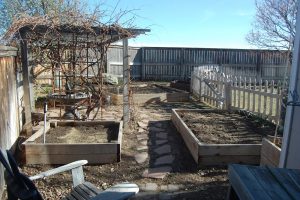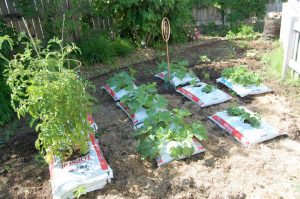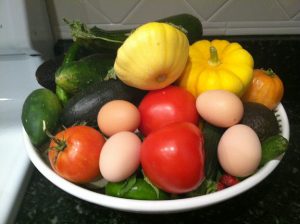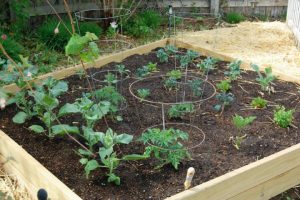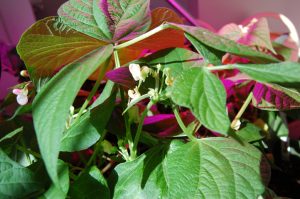These may look like my personal opinion (actually, they are) but there are dozens of articles and studies available on the Internet to support what I say below. For simplicity, I’ve limited myself to just one reference for each statement. You can Google the topics if you want even more information.
1. Garden soil contains microbes that can make you happy. “Antidepressant microbes in soil cause cytokine levels to rise, which results in the production of higher levels of serotonin. The bacterium was tested both by injection and ingestion on rats and the results were increased cognitive ability, lower stress and better concentration to tasks than a control group. Gardeners inhale the bacteria, have topical contact with it and get it into their bloodstreams when there is a cut or other pathway for infection. The natural effects of the soil bacteria antidepressant can be felt for up to 3 weeks if the experiments with rats are any indication. So get out and play in the dirt and improve your mood and your life.” http://www.gardeningknowhow.com/garden-how-to/soil-fertilizers/antidepressant-microbes-soil.htm
2. Children who garden eat more vegetables. I’ve seen this happen personally. My son was always involved in our garden and he would graze on things most kids would turn their noses up at. He now not only loves his veggies (he’s in college)–he has also become a gourmet cook!
“Teach a kid to grow a carrot, and [s]he’ll probably eat more of them, according a new study published in the Journal of the American Dietetic Association. The study found that kids who are involved in the process of growing their own food are more likely to have healthier diets.” http://www.rodalenews.com/start-kids-garden
3. Walking barefoot in a garden will ground your body for good health.
“Your immune system functions optimally when your body has an adequate supply of electrons, which are easily and naturally obtained by barefoot contact with the Earth. Research indicates that electrons from the Earth have antioxidant effects that can protect your body from inflammation and its many well-documented health consequences. For most of our evolutionary history, humans have had continuous contact with the Earth.” http://articles.mercola.com/sites/articles/archive/2012/11/04/why-does-walking-barefoot-on-the-earth-make-you-feel-better.aspx
4. Dirt is good for your immune system!
A mounting body of research suggests that exposing infants to germs may offer them greater protection from illnesses such as allergies and asthma later on in life.
“This line of thinking, called the “hygiene hypothesis,” holds that when exposure to parasites, bacteria, and viruses is limited early in life, children face a greater chance of having allergies, asthma, and other autoimmune diseases during adulthood. In fact, kids with older siblings, who grew up on a farm, or who attended day care early in life seem to show lower rates of allergies.”
http://www.webmd.com/parenting/d2n-stopping-germs-12/kids-and-dirt-germs
5. Sun exposure can actually PROTECT you from skin cancer.
Now, I’m going out on a limb here since so many doctors are still adamant that we need to wear hazmat suits when we leave our homes, but there is growing research supporting my statement. The way I look at it, we are NATIVE to this planet. We get our Vitamin D from sun exposure. We are meant to get some sun exposure. Where we get into trouble is that people have different skin color (pigment). Pigment is natural sun protection. If someone has very light skin, they can handle very little sun exposure before they burn. Burn damages skin cells, and during the repair process some errors can occur. Repeated burns means more margin for error. So IMHO sun exposure itself is not the culprit, it’s repeated prolonged exposure leading to sun burns and skin damage.
“Exposure to sunlight, particularly UVB, is protective against melanoma — or rather, the vitamin D your body produces in response to UVB radiation is protective. As written in The Lancet:ii Paradoxically, outdoor workers have a decreased risk of melanoma compared with indoor workers, suggesting that chronic sunlight exposure can have a protective effect.”
http://articles.mercola.com/sites/articles/archive/2012/04/28/vitamin-d-lowers-melonoma-risks.aspx
6. Gardening is fun and rewarding!
I shouldn’t put up any references for this statement, because I can speak from the heart here. But for the sake of consistency, I will. I remember the first time as a child I planted a radish seed in a little flower pot and saw the little hard brown speck turn into green leaves and then a whole radish. I was fascinated and have never lost that feeling! In a culture where we depend on outside “authorities” such as doctors and dentists, drug manufacturers, lawyers, bankers and investment counselors, realtors, car salesmen, dry cleaners, cosmetic sales persons and even food producers and grocery stores, how rewarding to be self-sustaining, even if it’s just a little bit. For me planting seeds and seedlings in my garden in late spring and within weeks being able to nibble my way around the plants is a feeling I can’t describe. Being able to pick a ripe tomato and eat it, warm from the sun, right there in the garden, is heaven. And I also preserve (can/dry/freeze) my veggies so during the winter I can grab a jar of stewed tomatoes out of the pantry to add to a meal I’m cooking and think, “I grew this!” There’s nothing like it.
http://www.examiner.com/article/a-garden-is-rewarding-and-healthy
7. Gardening IS exercise!
Bending, walking, carrying heavy bags, shoveling, weeding, stretching are all exercise but I don’t seem to really notice it when I’m in the garden. I’m usually so involved with what I’m doing that I barely notice what my body is doing. The bending over can sometimes tire out my back, so I find ways to sit on raised bed edges or even the dirt to avoid having to be bent over all the time. But I certainly can work up a sweat and on big gardening days I forego the treadmill. Here’s a WebMD article that talks about the “right” way to garden exercise. And don’t forget the pure clean oxygenated air you’ll be breathing in your garden (not to mention the happy microbes).
http://www.webmd.com/fitness-exercise/features/get-fit-by-gardening
8. Gardening can save you money.
Last winter I was looking at WholeFoods heirloom tomatoes for $5.99 a pound and thinking, “I grew at least 100 lbs of heirlooms last summer—for almost free.” I just couldn’t make myself buy one! I also grew probably 10 pounds of leeks, 3 pounds of shallots and countless other “gourmet” vegetables for next to nothing. Of course my up-front costs of building raised beds and adding soil, soaker hoses and a fence have to be considered, but I didn’t spend that much money and you don’t have to go the same route that I did. http://www.moneycrashers.com/how-to-save-money-with-a-home-garden/
Last summer I made a raised bed out of some pallets that a local lawn service gave me for free. I took them apart and made a box. But if you don’t have the tools or are not handy, there are instructions on the internet for using them “as is.” If you don’t have room to put a raised bed, you can garden plenty of things in pots and planters as long as they get enough sun and water. You can get large used plastic pots for free, or almost free, at garden centers. The ones that sell trees have especially large pots. You can even plant directly into bags of garden soil from the store. I did that before I had my raised beds, and the plants grew just as well! You can see a soil bag garden here, just scroll down to the third photo.
Seeds cost a little money, but you don’t necessary have to buy seeds either. If I get the rare good-tasting tomato at the grocery store, I’ll take some of the seeds out, stick them to a paper towel and dry them for planting later. Same goes for squashes (acorn, butternut, zucchini). I imagine you could do the same with cucumbers, melons—anything that has seeds in it. I save basil and dill seeds from the plants. I also save the cheap plastic flower packs from flowers I’ve bought and planted over the years and use those to start my seeds. Bonus: This year my neighbor cleaned out her garage and gave me all her planter packs and plastic pots, barely used. I got the change to replace my tattered ones for almost new.
Dirt is pretty much everywhere, and a lot of times free. However, our dirt has heavy clay, so for my garden I brought in bags of garden soil and either amend yearly with Sheep & Peat, or home-composted fruit & vegetable scraps and straw and poop from our chicken coop.
Hand watering or using a drip or soaker system is about the most economical way to go. If you’re allowed to in your state, collecting rain water (I can’t) is even better because not only is it free, but the quality of the water is so much better than tap water which is full of chlorine, fluoride and heavens knows what else.
9. You’ll have truly organic produce.
I buy organic produce as much as I can and then wonder if it’s really organic*. It’s not always available and can be cost prohibitive. So, say I really want brussels sprouts for dinner one night. I look in the grocery store and there’s a pile of fresh, big, healthy, crisp sprouts. They’re not organic, and they’re $1.99 lb. I go over to the organic section and the sprouts are small, wilted, dried out and loaded with aphids and they’re twice the price. My next option is to head to the frozen food aisle and see if they have frozen organic. Those are usually pretty nice. If not, my choice is going to be non-organic or none at all. A great resource that helps me decide is the Environmental Working Groups’ Dirty Dozen Lists. http://www.ewg.org/foodnews/list.php or even this one: http://waterworksvalley.com/food-thats-safe-to-eat/
BTW Once I did opt for the wilted organic sprouts and ended up throwing them away—they were so full of aphids and mildew that no matter how many leaves I pulled off, there were still more.
*But even when I buy organic, I sometimes question whether they really, truly are. Vegetables that come from Mexico, South America and other distant places make me question just “who” is deeming them organic and keep an eye on things. What are their standards?
If you grow you own food, you KNOW it’s organic, if that’s the way you’re going it. No pesticides (there are home made non-toxic ways of dealing with garden pests), no chemical fertilizers, no “overspray” from neighboring non-organic farms (hopefully).
10. The nutritional value of home-grown foods blows factory-farmed food out of the water (or farm).
“[I]t is true that fruits and vegetables grown decades ago were much richer in vitamins and minerals than the varieties most of us get today. The main culprit in this disturbing nutritional trend is soil depletion: Modern intensive agricultural methods have stripped increasing amounts of nutrients from the soil in which the food we eat grows. Sadly, each successive generation of fast-growing, pest-resistant carrot is truly less good for you than the one before.”
“A landmark study on the topic by Donald Davis and his team of researchers from the University of Texas (UT) at Austin’s Department of Chemistry and Biochemistry was published in December 2004 in the Journal of the American College of Nutrition. They studied U.S. Department of Agriculture nutritional data from both 1950 and 1999 for 43 different vegetables and fruits, finding “reliable declines” in the amount of protein, calcium, phosphorus, iron, riboflavin (vitamin B2) and vitamin C over the past half century. Davis and his colleagues chalk up this declining nutritional content to the preponderance of agricultural practices designed to improve traits (size, growth rate, pest resistance) other than nutrition.”
“Efforts to breed new varieties of crops that provide greater yield, pest resistance and climate adaptability have allowed crops to grow bigger and more rapidly,” reported Davis, “but their ability to manufacture or uptake nutrients has not kept pace with their rapid growth.” There have likely been declines in other nutrients, too, he said, such as magnesium, zinc and vitamins B-6 and E, but they were not studied in 1950 and more research is needed to find out how much less we are getting of these key vitamins and minerals.”
http://www.scientificamerican.com/article/soil-depletion-and-nutrition-loss/
As a gardener I tend to rotate my plantings yearly, it’s not only good for the nutritional value but also can prevent diseases from spreading from previous years. But I imagine even if I didn’t, my soil would still be healthier than those on modern “factory” farms because they have much larger concentrations of vegetables being planted year after year in the same beds.
11. Home-grown produce tastes so much better!
Yes, yes, yes this is absolutely true. Many people living in the USA have no idea of what real food tastes like! Store-bought produce has been picked before it’s ripe so it can be shipped all over the place before it starts to spoil. No fruit or vegetable tastes as good as something that has ripened ON THE PLANT and in the sun. Not to mention that, in the quote in #10 above, the preponderance of agri practices is designed to improve size, growth rate and pest resistance rather than nutrition. And real nutrition tastes better. At least to me. I had a friend actually spit out some of my freshly picked celery because it had “too much flavor.” She preferred the bland grocery store version.
12. You can grow a variety of produce that you can’t find in the store.
Again, grocery chains and farms have to provide produce that will travel and keep well, so they limit their crops to a few varieties that were either hybrid to fit their needs or, sadly, genetically modified. As a home gardener, you are only limited by:
• What will grow in your climate. Such as where I live, the growing season is relatively short so I look for plants that mature in as short a time as possible — 50-60 days hopefully. Seed catalogs will have that information for each seed that they sell. Seed catalogs are free and you’re not obligated to buy from them. They are great information resources and I recommend getting at least one. One of my favorites is Park Seeds. You can get around maturation times if you start your plants indoors very early (I’ve started tomatoes in February and they have fruit on them when they go in the ground), or go to the trouble of making hoop houses, cold frames, warm frames or greenhouses.
• Disease resistance in the produce you plant. This is a big one for me. After number of days to maturity, I look for the most disease resistant vegetables I can find. You can’t really do this with seeds you harvest from store-bought vegetables, but I’m guessing most of those are already engineered to be hardy to begin with. But… there’s not much more disappointing than growing tomatoes or zucchini all summer, and just when the fruit looks like it’s starting to ripen the plants fall over dead. The only thing more disappointing is annihilation by hailstorm.
• Moisture and how much sun your garden gets. Check seed catalogs there’s a little help here: http://www.bhg.com/gardening/plant-dictionary/vegetable/ Many plants, such as tomatoes, peppers, corn need full sun, which is considered to be at least 6-8 or more hours of direct sun every day, depending also on your location and time of day of the sun exposure. But there are plants that “tolerate” or even do well in partial sun. http://www.motherearthnews.com/organic-gardening/shade-tolerant-vegetables-zm0z11zsto.aspx As far as moisture goes, there are plants that can handle a lot of moisture, and others that can tolerate drier conditions. No plants, other than water plants, can survive having “wet feet” all the time — they need some air around their roots as well.
• Your personal tastes. If you’ve never seen a seed catalog, such as the Parks one, you may just be amazed at the varieties available for each vegetable. For instance, they have available 116 different seeds & seedlings for tomatoes: heirlooms, cherries, slicing, salad, romas, yellow, green, purple… I usually grow 2-3 different types of tomatoes every summer: one for eating/canning, romas and a cherry. For a long time my favorite was the Park’s Whopper and I may try those again this year. Aside from tomatoes, there may be plants you’ve never seen in a grocery store, never eaten or even heard of! I started growing kohlrabi several years ago. The leaves are great cooked as greens and the bulb is delicious raw in salads, sautéed or even added to soup or stew. Parks has a variety of beets, which I grow mostly for the beet tops: I love them lightly steamed, they’re nutritious, delicious and don’t taste like beets at all (if you don’t like the beet flavor). They will produce new leaves all summer into fall if you don’t overpick them. In the fall I store them to make pickled beets, add them grated to salad or make beet kvass. Parks even now has a “Superfood” section on their web site if you want to get the most nutrition out of your garden.
So I want to see you get out there and GARDEN!


